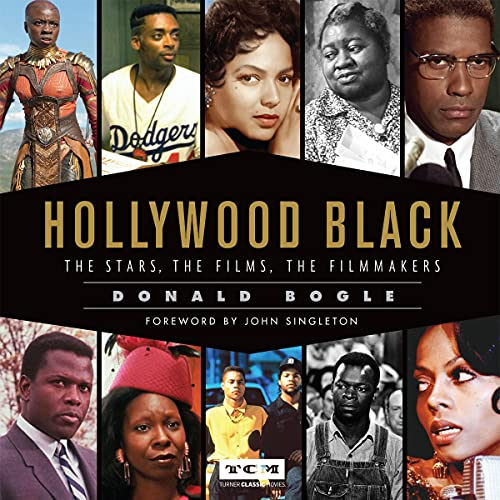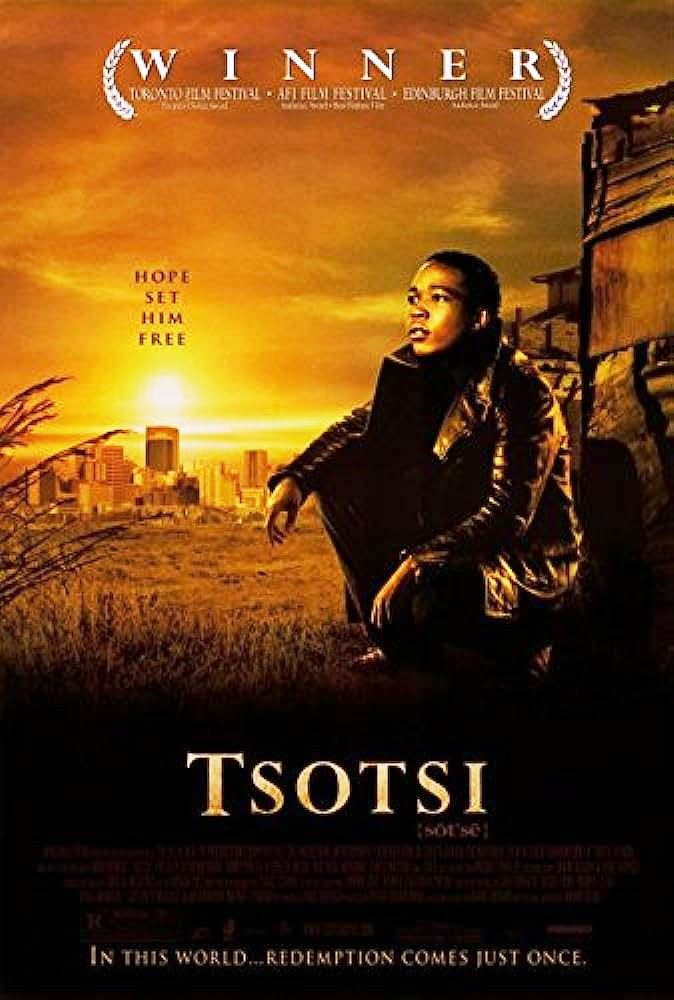Lights. Camera. Action! Discover the true scale and size of an untapped multi-billion dollar industry hidden in plain sight and understand its vast potential and opportunities.

In today’s data-driven world, information is the currency that fuels industries and drives success. For film producers, this is no different, data is the lifeblood of our endeavours. It empowers us to approach studios, production companies, financial institutions and investors with a compelling business case, promising not only a return on investment but also substantial profits within a reasonable timeframe or pay back a loan and its interest within an agreed term but what happens when the data you need is scarce or even worse, non-existent? For black filmmakers, this is an all-too-familiar challenge.
As an independent British-Nigerian filmmaker currently working on a project titled “It’s the Blackness,” directed by the talented Hakeem Kae-Kazim, I have some understanding of the challenges firsthand. Engaging with financiers and investors over the years in making the film,
I have realized the dire need for comprehensive data and insights into the black film industry
so let’s embark on a journey as we explore the dimensions of the black film industry, uncover its true scale and embrace the immense opportunities it presents.
To comprehend the vastness of the black film industry, we must first examine its building blocks. With an estimated 1.3 billion black people worldwide, wielding a combined Gross Domestic Product (GDP) of $4.9 trillion, we have a solid foundation to build upon. But where are these vibrant audiences located? Well, this isn’t a hard question to answer as most black people reside in Africa of course, North America, Western Europe, South America and the Caribbean.
The Global Film Industry Unveiled
Let’s start by peering behind the scenes of the global film industry. According to the US Motion Picture Association, the film industry boasted a net worth of $136 billion in 2018. But that’s not all—the recent recovery from the pandemic has propelled its value to an impressive $160 billion in 2021. The global box office is predicted to soar to $42.5 billion, with China and the United States leading the market. Furthermore, the film and video market is poised to surge to $318.2 billion by 2025 and a staggering $410.6 billion by 2030. However, the burning question remains: How much of this vast $160 billion can we attribute to the black film industry? To find the answer, we must dissect the main players in this vibrant segment of the film industry and examine the share of their GDP attributed to filmmaking.

After Hollywood and Bollywood, Nollywood, Nigeria’s film industry, has rightfully earned its place as a key player in the global film landscape. With a valuation of $250 million from the findings of a UNESCO report in 2009, Nollywood has witnessed an astonishing average yearly growth rate of 33.4%, fuelled by Nigeria’s population of 206 million, primarily composed of young people and an estimated 25 million Nigerians in the diaspora which is a country on its own, larger than Jamaica, Demark and Scotland combined.
Adding to this remarkable foundation, Nigeria’s Gross Domestic Product (GDP) in 2022 was $477 billion as reported by the World Bank plus notably the Nigerian National Bureau of Statistics revealed Nollywood contributes a remarkable 2.3% to the country’s GDP, hence we arrive at a film industry worth a staggering $11 billion.
Black America: A Cinematic Powerhouse

Some may argue that there is no such thing as an African American Film industry but with a population of approximately 47 million, African Americans wield a formidable GDP of $1 trillion according to BlackPast and PolitiFact. Pause for a moment to let that sink in, if Black America were an independent nation, it would stand as the 15th largest economy in the world with a median household income of $45,000. There is also the fact that African American Producers and Companies have spent billions in production budgets and generated tens of billions of dollars at the worldwide Box office plus invested heavily in Industry Infrastructure such as Studios to stake its firm claim as an important segment in the global film industry.

In a report published by the Motion Picture Association (MPA) in 2020, the film and television industry supported 2.5 million jobs in the United States and contributed $177 billion to the U.S. GDP. If we take into consideration the size of the Black population, their income and spending power, film infrastructure expenditure and revenue African American films generate globally then one can estimate, that Black America contributes at least 5% of $177 billion to the US economy which is conservatively worth $8.85 billion.
It is important to note that we did not include any data from the mixed race population which according to the U.S. Census Bureau’s 2020 figures the multiracial population accounted for approximately 33.8 million people, representing around 10% of the total U.S. population.
South Africa Film Industry: A Movie making Gem

Nestled in the southern tip of Africa, South Africa is home to the second largest film industry on the continent and contributes significantly to its economy. According to the National Film and Video Foundation (NFVF) 2019/2020, the direct contribution of the film industry to the economy of South Africa is projected at $206.8 million. However, if we factor in, indirect economic contributions to the figure the result will be a contribution of $385.6 million to GDP.
Considering the World Bank puts the nominal GDP of South Africa in 2020 at approximately $314 billion then, the film industry’s contribution represents approximately 1% of South African GDP putting the value of the South African Film industry at $3.14 billion.
Rest of Africa: Simmering Potential

According to a report by UNESCO, Africa’s film and audiovisual industries employ an estimated 5 million people and contribute an estimated $5 billion to the continent’s GDP. This excludes the contributions from Nigeria and South Africa. While African cinema still faces challenges in competing with high-value markets, such as Western Europe, North America, and Asia, its immense potential for growth cannot be ignored as it continues to evolve and grow.
United Kingdom: Asleep at the Wheel?

With a population of 4 million Black British and non-Black British people, the United Kingdom holds the position as the second-largest box office market for Black films, second only to the United States. To put this in context, the highest-grossing Black film at the UK box office, “Black Panther,” achieved an impressive $71 million, with only the US and China surpassing its success. Additionally, African American films have accumulated an estimated $12 billion over the decades at the UK box office.
Given these impressive statistics and the UK’s significant historical, political, cultural and commercial ties to the global Black community, one would naturally expect the country to be a leading force in the Black film industry as the potential benefits to the UK economy are huge. However, it is disheartening to witness the UK continuously falling short of its full potential, not only within the film industry but across various sectors. The exclusion of ethnic minorities, women and people from the North of the country from realizing their full potential and contributing to the nation’s wealth is a distressing reality as the blame is often shifted towards the poor, Europe, and immigrants when addressing the country’s poor economic performance.
Europe: Overlooked Opportunities

Similar to the UK, Europe lacks a distinct black segment in the film industry, despite having a black population of 9.7 million people. France alone contributes 5 million people, followed by Italy with 1.2 million, the Netherlands with 900,000, Belgium with 800,000, Germany with 600,000, and Spain with 550,000. Additionally, there are an additional 681,700 black individuals scattered across Europe. Despite these significant numbers and strong historical ties to the global black community, the region fares no better than the UK in terms of representation in the film industry.
Jamaican Film Industry: Nurturing Growth on the Island

According to the World Bank, the estimated population of Jamaica as of 2021 is around 2.8 million people, with a Gross Domestic Product (GDP) of approximately 15 billion US dollars in 2020.
In terms of the Jamaican economy, the film industry plays a relatively small role, providing around 2,800 jobs and hosting approximately 120 international productions on the island per year. The “culture, entertainment, and sports” sector, which encompasses the film industry, accounted for approximately 2.8% of Jamaica’s GDP in 2019, equivalent to $420 million. However, it remains uncertain how much of this figure can be directly or indirectly attributed to the film industry in Jamaica.
Unleashing the Boundless Potential of the Global Black Film Industry
Now that we have explored the various facets of the black film industry, it’s time to appreciate its true worth. A conservative estimate places the industry’s value at a remarkable $28 billion, but this is just the tip of the iceberg. It represents a foundation upon which further research can be conducted, enabling a deeper understanding of the industry’s potential and impact.
The untapped potential of the black film industry is vast, offering significant growth opportunities and opening new frontiers within the cinematic realm. The destiny of the black film industry lies within our grasp as we unite to support and celebrate its growth. Together, we can build an industry of significant commercial value where black voices, stories and perspectives are not only told but heard, embraced, cherished and shared with audiences around the world so we become a force of economic empowerment and change as we shape our narratives, entertain, inform, educate and transform lives.
Special recognition goes to Talking Drum Entertainment for their invaluable research, models, and analytics, which have significantly contributed to the writing of this article.

